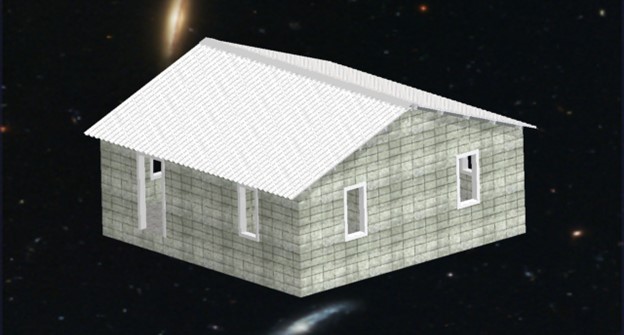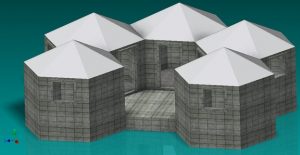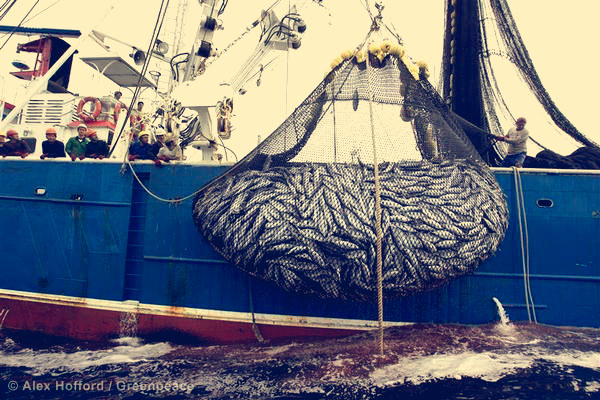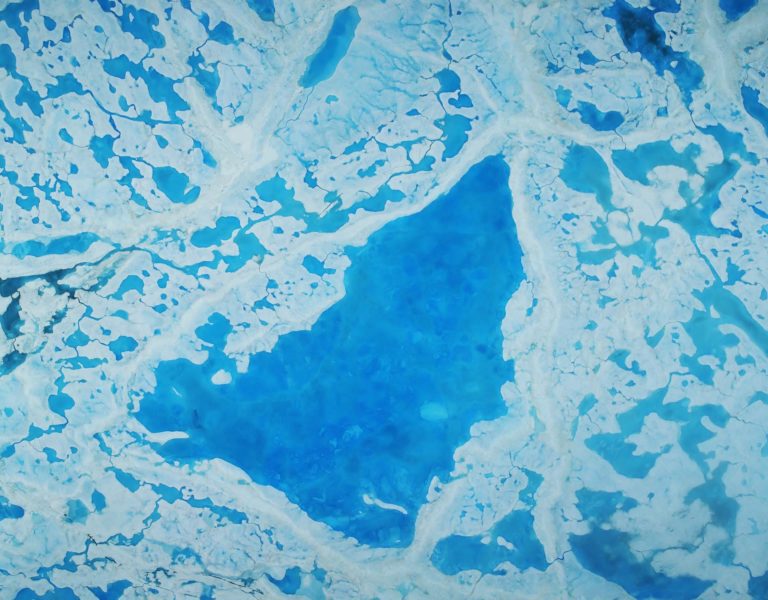By Dr. Paul Olivier
We have seen so far that compressed earth blocks can be used to build animal pens, to make larval and red worm pods, to elevate aquaponic sand beds, to construct duckweed ponds, and so forth (Pork, Fish and Vegetables). They can also be used, of course, to construct houses. Social enterprises can engage small farmers to construct their own houses – houses, perhaps, for as little as $5,000 US, as shown here: The Compressed Earth Block House. Fiber from rice hulls, rice straw, banana stem, vetiver and so forth can be incorporated into a compressed earth block.
But if large quantities of cellulose-based/vegetable fibers are not transformed and ultimately returned to the farmer’s field, this might create an imbalance or shortfall in soil nutrients and necessitate the use of external inputs such as chemical fertilizers. A better approach might be to incorporate fibers from marginal materials such as waste plastics, as set forth in A Study on the Utilization of Plastic Wastes in Stabilized Masonry Blocks.
The authors of this study explain that raw earth is one of the oldest building materials used by man. The use of raw earth dates back at least 10,000 years. Up to 30% of the world’s population still lives in earthen construction. Approximately 55% of all houses in India today use raw earth for walls.
The compressed earth block is created under pressure, in most cases, by means of a manual or hydraulic press. Compaction increases soil density, it decreases void ratios, it reduces soil porosity, it reduces water permeability, it reorients particles, it reduces the formation of cracks, it expels water and eliminates the need to sun-dry. This results in a high block strength and a short curing time. “About 60% increase of the dry compressive strength was obtained when the applied static stress was increased from 2.1 to 7.3MPa.”
The compressive strength of a block is strongly related to dry density. As a rule, the compressive strength of a block increases as dry density increases. The density of a stabilized compressed earth block should not be below 1.8. A density between 1.8 and 1.85 is ideal. When properly compressed, blocks have a high thermal mass, a high load-bearing capacity, a low permeability and a high resistance to erosion and water absorption.
Water absorption decreases as the clay content decreases and the cement content increases. But a cement content greater than 10% does not significantly improve sorptivity values. To the extent that blocks do not absorb water, they become more resistant to erosion. When properly made, blocks does not need water-proof coatings or plasters. Furthermore, these blocks provide good thermal and acoustical insulation.
The dirt used in making compressed earth blocks is cheap, readily available, fire-resistant and recyclable. Since they are not fired in kilns, these blocks have a low level of embodied energy. “Typically cement stabilized soil blocks require less than 10% of the input energy used to manufacture similar fired clay and concrete masonry units.” Air pollution is not created in the fabrication of cement stabilized soil blocks. These blocks are simple and easy to make. Unskilled people can make them. Quite often blocks can be fabricated on a building site. “Earthen construction can be constituted of soils available within a building’s footprint.”
To enhance the natural stability and strength of soil, blocks can be stabilized mechanically, physically and chemically. A compressed earth block (CEB) becomes a compressed stabilized earth block (CSEB). Compaction gives rise to high density, high compressive strength and good erosion resistance. Cement and lime can be used in stabilization.
A soil with a plasticity index below 15 is ideal for cement stabilization. Portland cement is commonly used. “Typically, cement binder is added between 4 and 10% of the soil dry weight.” With the incorporation of 7% cement, one can build a 2-story load-bearing structure. If the cement content exceeds 10%, it becomes uneconomical to make a CSEB. To meet a minimum requirement of strength, a cement content of 7.5% is required.
In the case of a soil with a plasticity index greater than 15, lime or some other pozzolanic stabilizer can replace cement to a certain degree. The lime content situates at about 1% to 3% by weight. At a plasticity index greater than 20, manual compaction is not suitable.
Sandy soils with a sand content greater than 65% are ideal for the production of soil-cement blocks. A non-expansive clay fraction of about 10% is also ideal. Clay contents above 10% should be avoided.
Several studies reveal that it is better to use cement-soil mortar with soil-cement blocks than cement mortar. A cement-soil mortar shows a higher value of strain at ultimate stress than a cement mortar. The amount of cement in a cement-soil mortar should be about 15%. Studies show that “composite mortars such as cement-lime mortar and cement-soil mortars have 15 to 25% higher masonry compressive strength compared to masonry using pure cement mortar.” A mortar thickness of 12 mm works well.
With the addition of fibers, a stabilized block increases in compressive strength. At a cement content of 7.5%, a block with fibers can increase in compressive strength by almost 90%. At a cement content of 10%, a block with fibers can increase in compressive strength by as much as 118%. Tensile and elastic properties also improve. Fiber length has a greater bearing on strength increase and bearing capacity than fiber quantity. Fibers prevent cracks during the drying process. “The benefits of fiber reinforcement includes both improved ductility and inhibition of large crack propagation after initial formation.”
Natural fibers (vegetal or protein) can be used, but neither performs as well as synthetic fibers. The use of plastic fibers increases compressive strength far more than straw fibers. “Natural fibers do not have a positive effect on the compressive strength; in fact, straw fibers are weakly adherent to the earth matrix and they can slip.”
Synthetic fibers are chemically inert, they do not corrode, they are light, they are flexible, they are elastic, they provide skin friction, and they allow for better control of shrinking and cracking. When these synthetic plastics consist of waste plastic, one can make a high quality block and at the same time rid the environment of highly problematic waste materials.
PET bottles can be reduced to fibers 2 to 3 mm in width and 10 to 20 mm in length. They can then be incorporated into a block to impart a high degree of compressive strength. Chopped plastic bags perform better than PET bottles in enhancing compressive strength. The content of plastic fibers ranges from 0.1 to 0.2% by dry weight. A figure of 0.1% is sufficient for plastic bags. One might blend plastic bags fibers with bottle fibers. The former imparts better compressive strength, whereas the latter imparts better tensile strength. Poor quality glass of little or no recycle value can be crushed and added to the block.
With regard to mix proportions, the maximum dry density of the soil should be 1.84. The incorporation of cement at 7.5% dry matter is generally sufficient. The incorporation of plastic fibers should be about 0.01% dry matter. The molding pressure should be about 5 MPa. The optimal water content of the material to be compacted situates at about 14%. Optimal curing time under moist cover is 28 days.
When a block is properly constructed, it can have compressive strength values ranging from 3.8 to 5.5 MPa. These figures are highly satisfactory, since the minimum compressive strength for a kiln-fired brick is 3.5 MPa. It is time to transition away from kiln-fired bricks and concrete blocks. The reason is not hard to grasp.
Buildings account for one-sixth of the world’s freshwater withdrawals, one-quarter of its wood harvest and two-thirds of its material and energy flows. The increased consumption of materials and resources together with the associated creation of solid and toxic wastes underscore the need for the construction industry to develop, use and dispose building products in a sustainable manner (Bicini et al. 2007).







